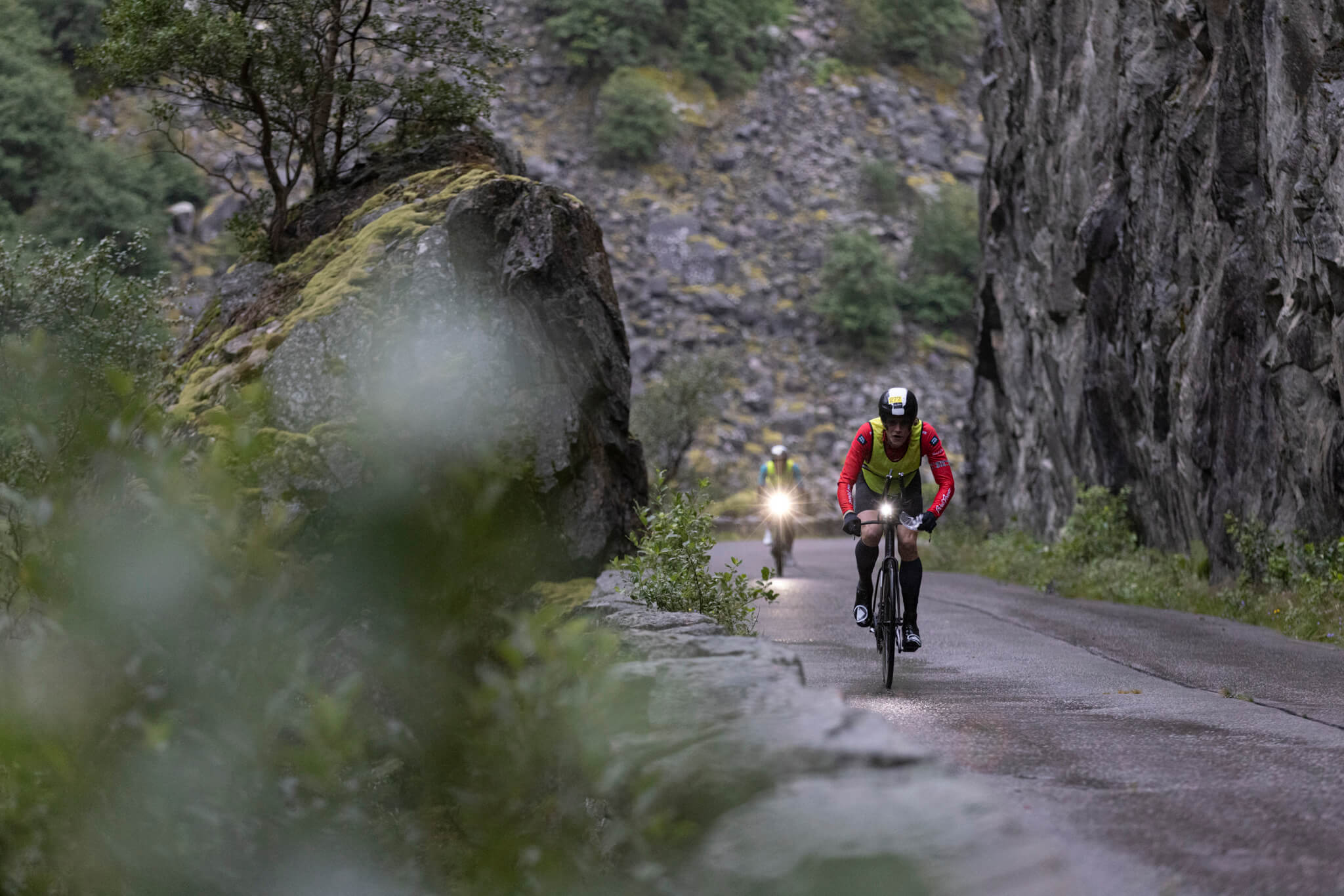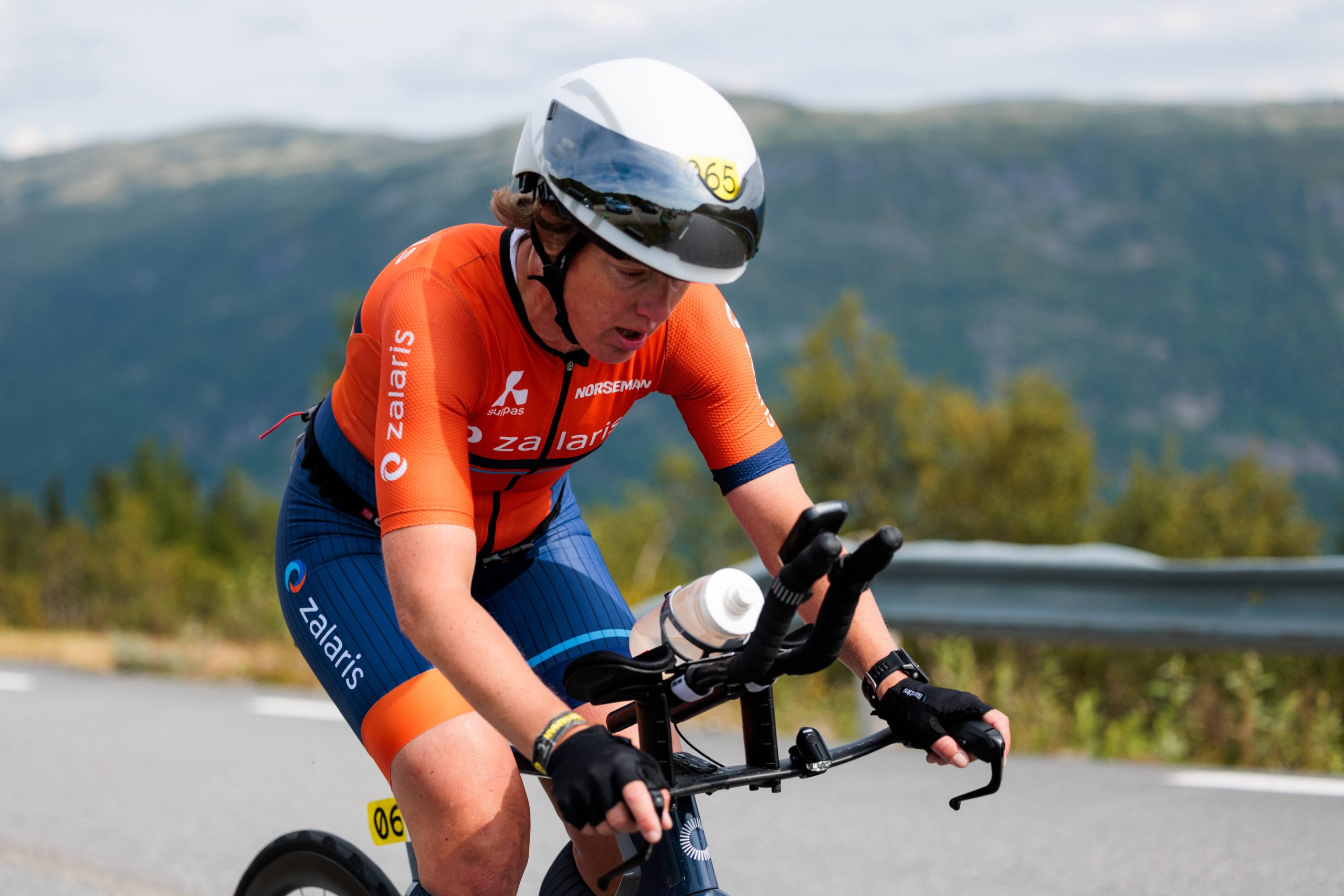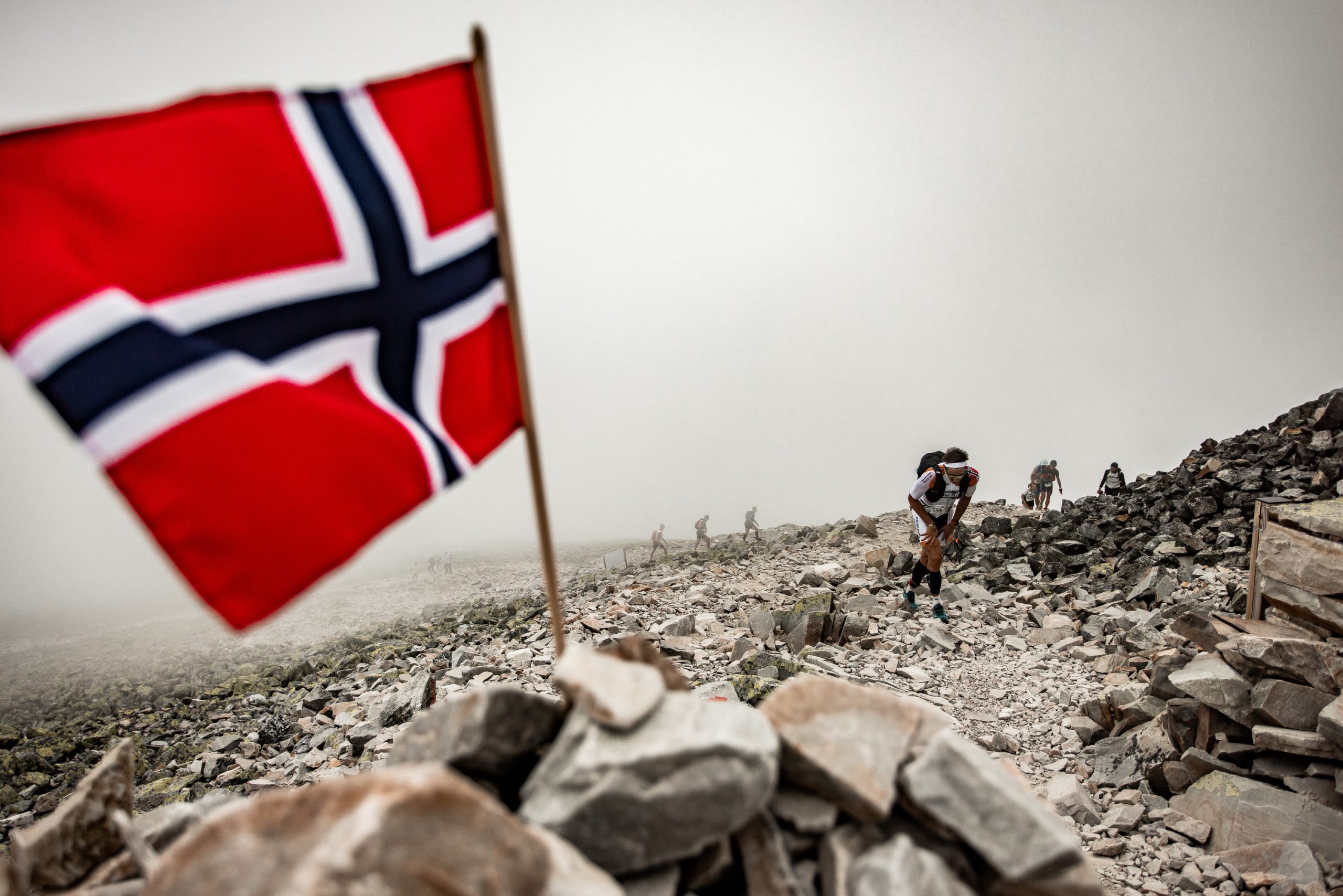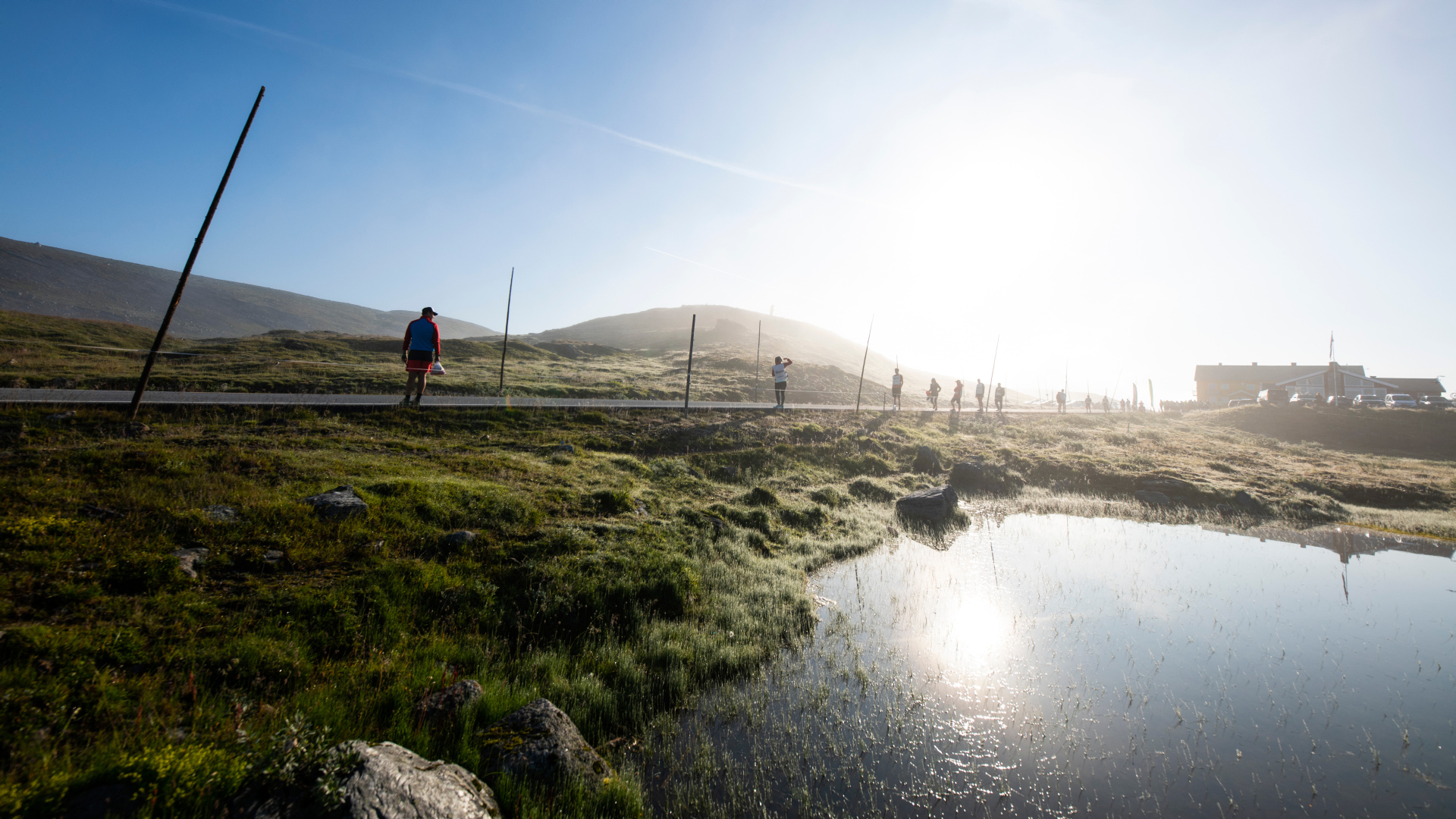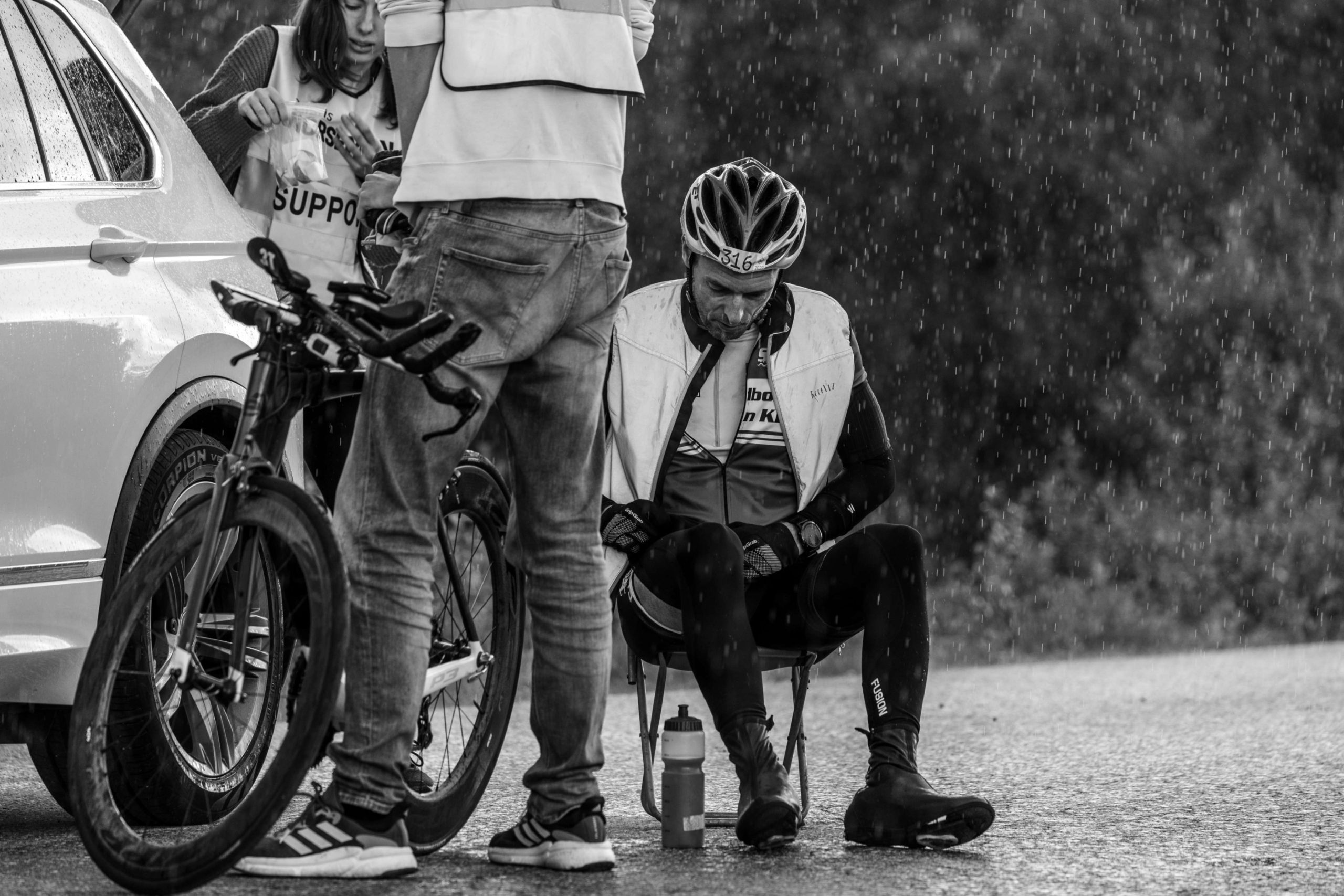Second episode in our You are not ready series focus on the Norseman bike leg and how you and your support can prepare for gusting winds and cold weather. If you missed the first episode about cold water swimming, watch it here.
Scroll down for the full episode notes.
Fredrik Mandt:
Today, we are going to focus on the bike leg and how you and your support can prepare for the Norseman bike. When athletes exiting the water and arriving T1. What’s kind of good preparations they should start thinking about now?
Jørgen Melau:
Well, it is very important to have your gear ready in the T1 section and one of the problem he will face straight now is that his fingers is kind of not of that much use that he is used to.
So the dexterity or the manual motor function of the finger is decreased, so it’s a bit hard to do all the tasks that you normally do to take off your wetsuits and things like that. It’s a bit harder and you should also do the T1 quite rapidly because of the race obviously, but also be because you will get colder in T1. And so one of the thing we do know very well now is that you actually get colder after you exit the water.
So even if there is warm weather now, it will get colder for maybe 15 minutes well into the bike race before the body starts to heat up, especially at the first part of the bike. Your bike handling skills is a bit worse than the normal is just because your fingers and your manual dexterity is decreased. So your motor skills in the finger is decreased after the cold swim. So you should really be aware that your bike handling can be a bit worse than you are used to.
Fredrik:
And you are actually dressing for winter now?
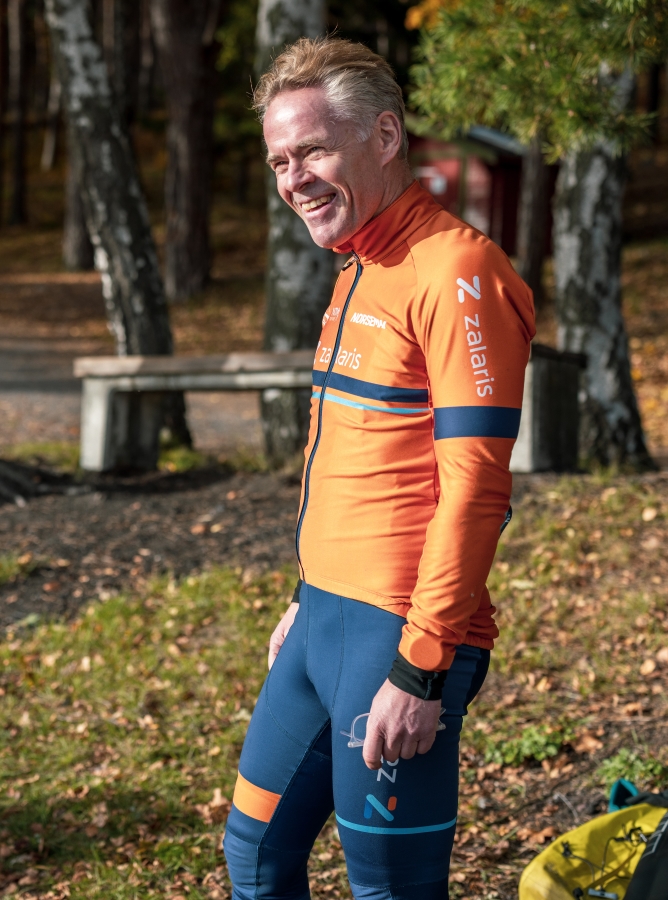
Hans-Petter Mellerud:
Yeah, almost now since it’s pretty cold today. So normally on the warmer Norseman`s that I’ve been to, I would just have put on the jacket that I will put on afterwards because that’s normally more than enough because you’re going to go uphill for one and a half, almost two hours. So that will keep you warm. Even this year that was really cold. You stayed pretty warm up the hills, but it’s when it’s flattening out over the mountain, that’s when you’re going to get really, really cold if it’s cold up there. So this one I would normally use if it’s less than maybe five degrees.
Jørgen:
This is wool and it’s also mesh inside, so this is very helpful for very cold weather.
Hans-Petter:
The mesh really works great. It’s wool and keeps air under there, which is really insulating very well and it also takes the moisture away from your body.
Fredrik:
What more would you recommend to dress for the bike leg?
Hans-Petter:
First I use thin wool socks, all the same reason, wool is always better than cotton or anything else. On my shoes, I have this neoprene toe covers.
Fredrik:
Yeah.
Hans-Petter:
Actually also this year put on this great outside covers was from Trimtex. It’s good both for aero but also helps you also stay warm. And that was at least to me, really saved the day. I wasn’t cold on my feet at all this year.
Fredrik:
And you have a jacket here?
Hans-Petter:
Yeah, So this jacket, I really love this jacket. It’s also our Zalaris company colors coming from Trimtex. The jacket is really good. It’s like almost a little bit neoprene like with a liner. Keeps you warm. It’s pretty much windproof and it doesn’t let too much water go through, so it’s like somewhat wearing a wetsuit but it’s very versatile. So I use it a lot actually. Both biking during the wintertime as well as for Norseman is really super from you come out of the water until you’re at least midway through to Eidfjord. But this year I used it from T1 to T2. So it works really well.
You should have more clothing because otherwise you are going to be really cold and that’s not good for the race. You lose a lot of energy and also you cannot have the experience as well when you cross the mountain. It’s definitely my favorite part. When you sit there and you see this really super cool nature and mountains and everything and if you’re so cold you cannot hardly hold onto anything. That’s the only thing you think about and not the experience. So put on some clothes and enjoy.
Fredrik:
Jørgen, do we have any research data? How affects cold core temperature your performance?
Jørgen:
Not exact data on that, but it is for most of the athletes it will be very helpful to put on some warm clothes or windproof clothes or both when you are getting colder. So for most of the athletes, it’s reasonable to stop and put on that extra jacket or your clothes or your gator or whatever. So it’s not the Olympics, you are not racing an Olympic gold and for most of our starters, that is very reasonable to stop and put on some warm clothes if you feel that you are getting colder. This year we actually had the worst condition that we ever had on the first part of the bike race because of the wind. They have a rain and also the cold, so you really need to consider very well what you are wearing.
Hans-Petter:
And even the supporters should also be sure that they have clothing too, in case you need to help someone out. You’re out there and you very easily just lose all ability to really be a helpful hand if you are just getting too cold.
Jørgen:
Yeah.
Fredrik:
Hans-Petter, do you have any other tips in terms of accessories that you should use during the bike leg?
Hans-Petter:
Yeah, again, if it’s cold I use a hat or also this buff that you can just use it like this, have it underneath the helmet. That works out pretty good. Really helps keeping the head warm because that’s where a lot of the heat disappears and you need to be sure that you have some really nice gloves. Really for this here again, this one also in some of this almost like wet suit like material help my fingers pretty warm and they were not waterproof but worked out pretty well. But I would also have some heavier stuff, also wind and wet proof ready in case it’s even getting colder.
Thanks to Thomas Brun from our great partner foto.no for production and editing. And everything in between.
